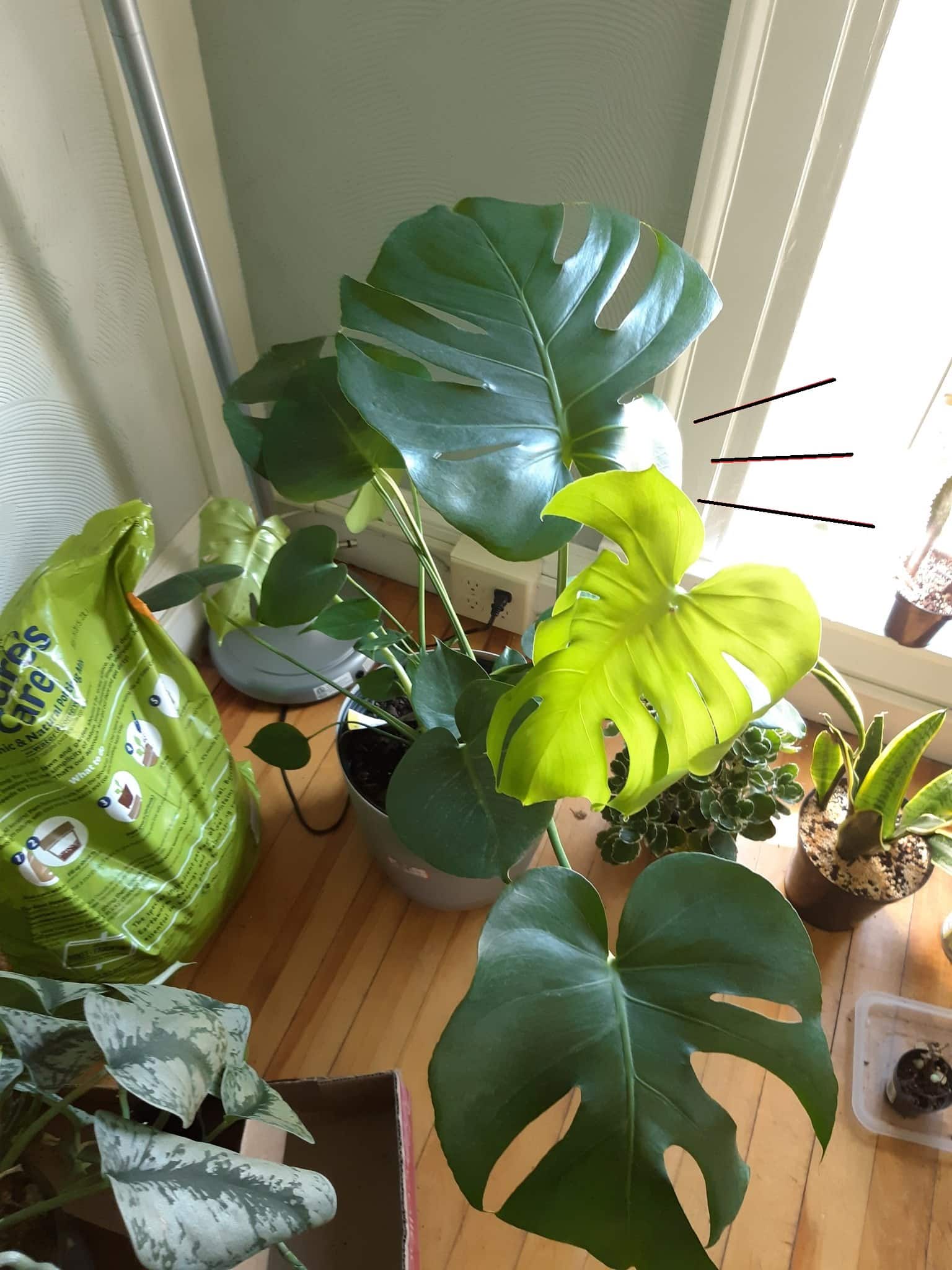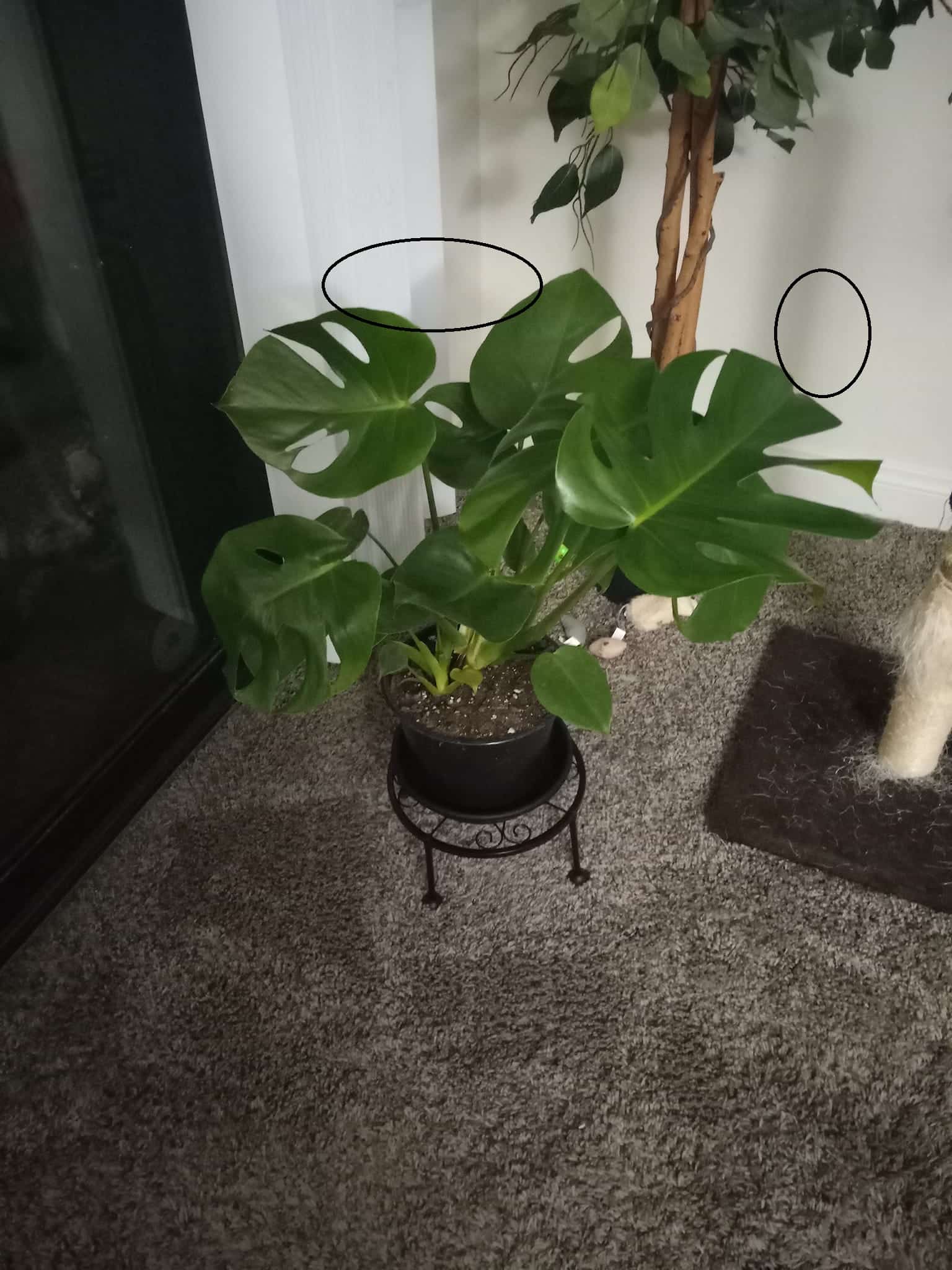Though Monstera is native to the tropical rainforests of Central America, you can mimic the indoor environment by providing the proper sunlight.
Keep the foliage of Monstera clean and dust-free to help it photosynthesize better.
If you are unaware of the Monstera light requirement, finish this article and place the plant in the proper location!
Table of Contents Show
Monstera Sunlight Requirements
In Southern Mexico and Guatemala, Monstera grows on the forest floor under big trees extending their aerial roots and climbing on the tree to search for enough light.

When growing Monstera as a houseplant, you may need to consider the factors below.
1. Type of Sunlight
Monstera can’t tolerate direct sunlight, so you must provide it with bright indirect sunlight or medium light when growing at home.
Light from windows reflected light, and light through sheer curtains are sources of bright indirect light for your Monstera.
The filtered light doesn’t directly hit the plant; therefore, it is best for healthy growth.
If the plant’s shadow is faint, soft, and not precise, your Monstera gets the bright indirect sunlight.
But beware of low light; don’t grow Monstera plants in dark rooms.
2. Light Intensity
Light intensity needs may vary as there are different varieties of Monstera.
Generally, light intensity ranging from 40o-100 footcandles (4000 Lux-1000 Lux) is best for maintaining Monstera.
In the case of grow lights, placing them near your Monstera will damage the foliage due to high intensity.
It would be best to keep grow lights 10-12 inches far from the plant. Provide the plant with a 10000-12500 Lux light intensity.
If you are unsure how to determine the right light intensity in your home, get a light intensity meter to measure the intensity of light your Monstera is getting.
3. Light Duration
If you live in a tropical region far from the equator, you must place your plant in light for longer. Otherwise, placing your plant for a few hours in bright indirect sunlight is enough.
Generally, it is best to keep your plant in bright indirect sunlight for at least 6-8 hours daily. However, it may vary depending on various factors.
Similarly, the direction of the window and seasons also determines the duration of light your Monstera needs.
Due to weaker lights in winter, your Monstera becomes inactive and slows down the growth rate. So, consider placing your Monstera in light for longer in winter than summer.
4. Proper Location
If you place your plants indoors, make sure the plant gets the needed amount of bright indirect light.
It is best to place the plant in the south-facing window where your Monstera will receive plenty of sunlight. East and west-facing windows are also okay.
Remember to put the plant 2-3 feet away from the window so that your plant receives bright indirect light only.
If you intend to place your plant outdoors, put it in a shady spot. Make sure the harsh direct sunlight does not hit the plant.
Signs your Monstera Needs More or Less Light
Monstera will show signs of distress when it doesn’t receive enough sunlight or gets exposed to extreme sunlight.

Although the plant is a hardy plant, it may die if left for a long time under these conditions.
| Light Deprived Monstera | Light Saturated Monstera |
|---|---|
| Leggy and Stunted growth | Burnt leaves |
| Lack of fenestrations (only if your plant is 2-3 years old) | Yellow leaves with brown tips |
| Slow growth of the plant (except in winter) | Curled and droopy leaves |
| Poor development of aerial roots and weaker stems | Bleached leaves or loss in color |
| Small and Curled leaves | Wilted plant |
| Discoloration of leaves | Yellowish-brown spot in leaves |
| Wilted foliage | Crispy leaves |
| Wet or soggy soil | Soil dries fast |
However, ensure these signs are due to the sunlight and not other reasons like watering, fertilization, pest infestation, etc.
How to Grow Monstera with Artificial Light?
Grow lights work as a supplement to sunlight and create the proper condition for photosynthesis.
Artificial or Grow light is affordable and can be found in different sizes and shapes.
It is better to use blue and red spectrum grow lights to help plants develop attractive leaves.
You can also use full-spectrum white grow lights, although they will not produce the same result as blue and red spectrum grow lights.
Swiss Cheese indoor plants require red and blue mixed light for healthy growth. Artificial light comes with different features and standards. So Choose wisely!
Provide 10-12 hours of grow light daily if your plant doesn’t receive any indirect light.
Also, if you use artificial light for your Monstera to grow, it is recommended to place the plant in bright indirect sunlight at least once a week to ensure the plant is happy.
While you can turn on grow light for only 3-4 hours if your plant receives bright indirect for a short period.
Don’t use grow lights 24X7. Allow your plant to be in the dark for 7-8 hours to go through respiration.
From Editorial Team
Water Monstera properly to parallel the light requirement!
Water can rejuvenate the Monstera under the excess light, and watering is needed to balance the light flow.
So, you need to hydrate the Monstera plants every 1-2 weeks when the soil is dry, 1-2 inches off the surface.
